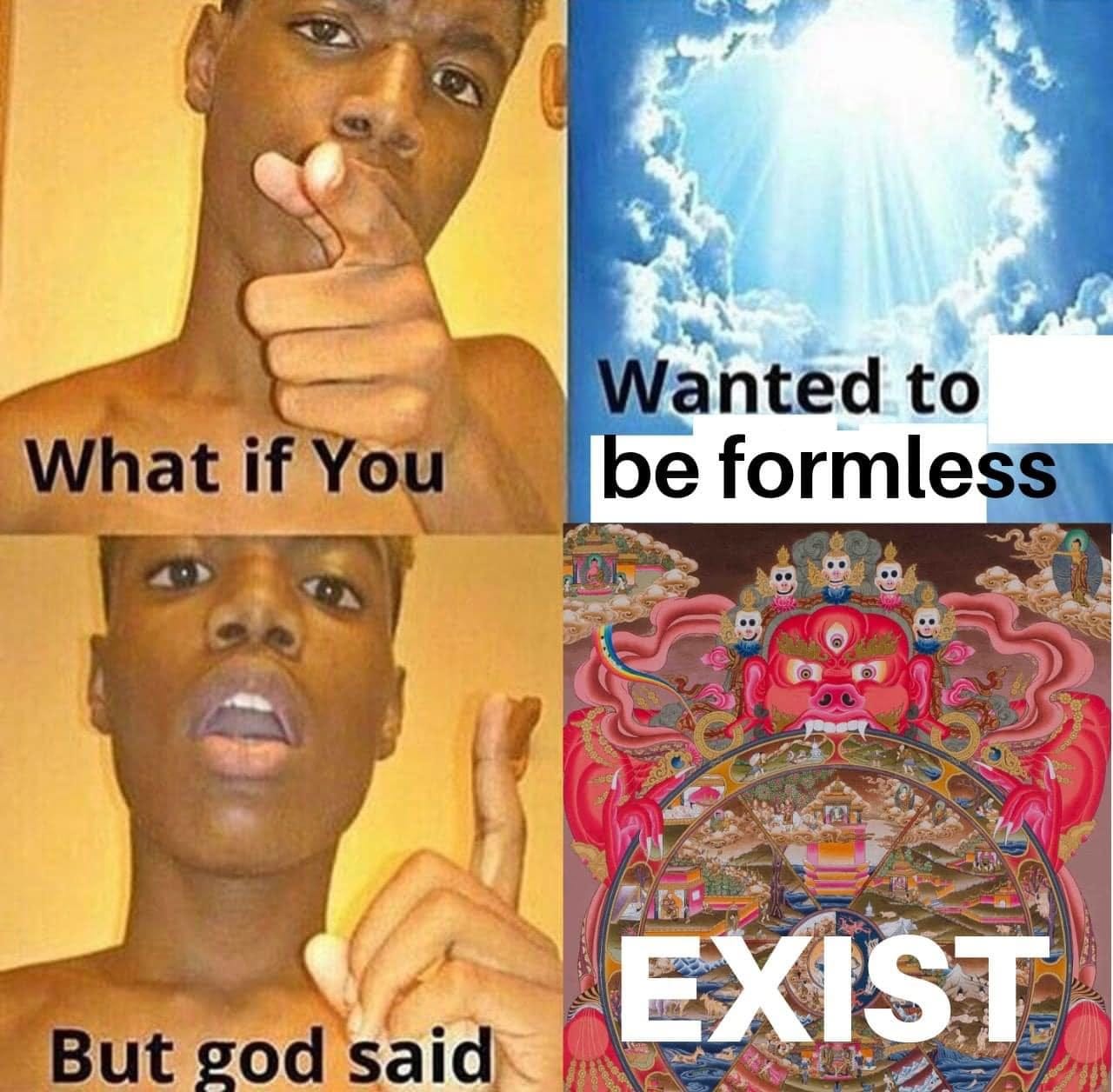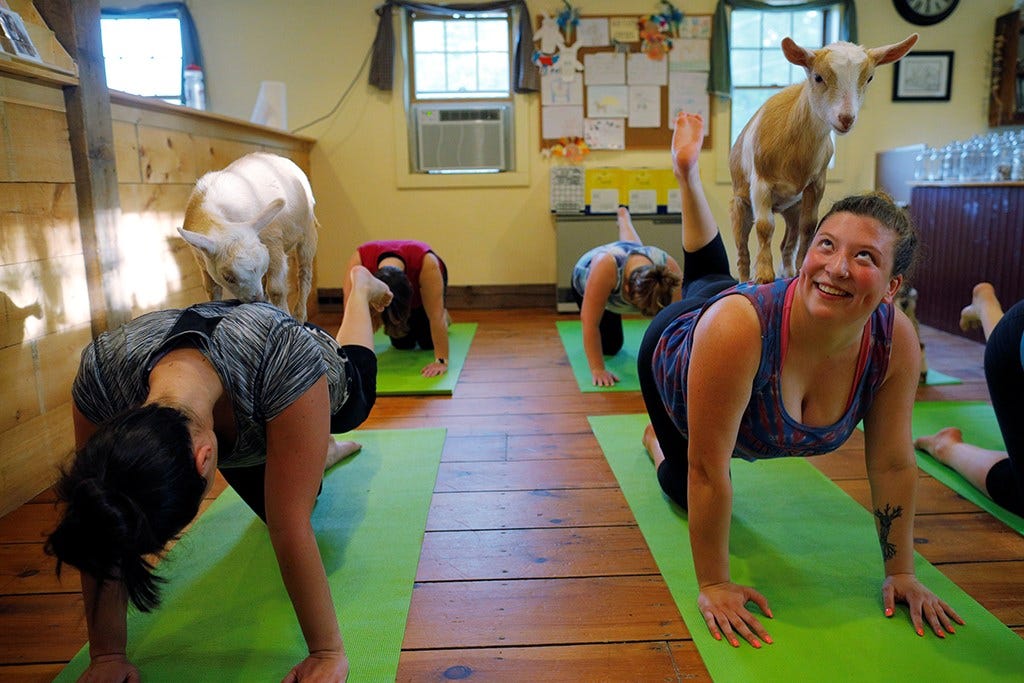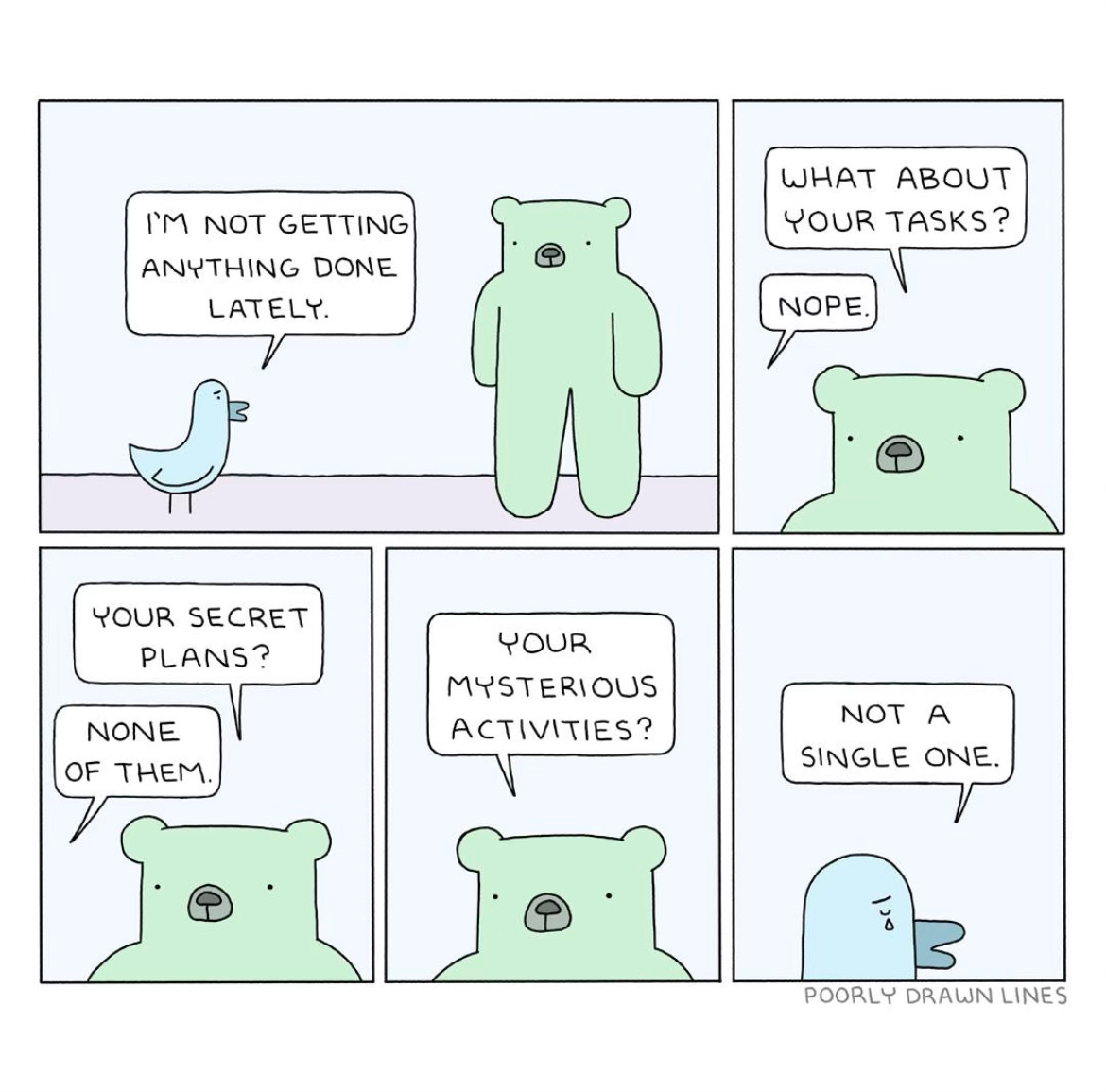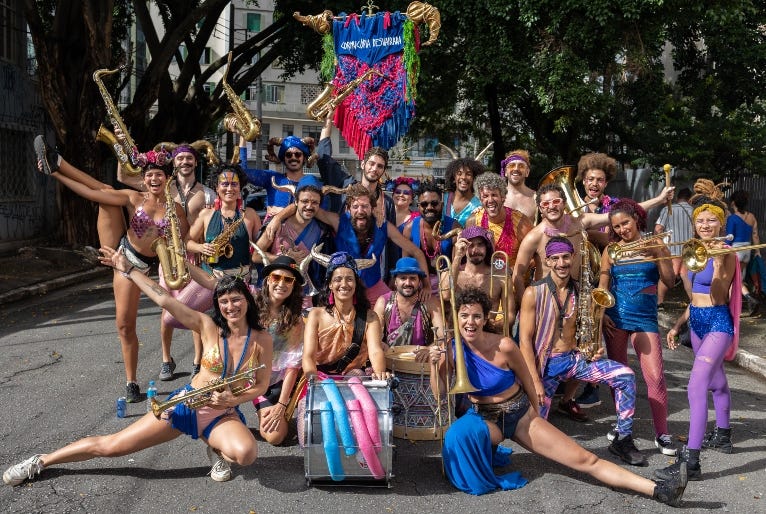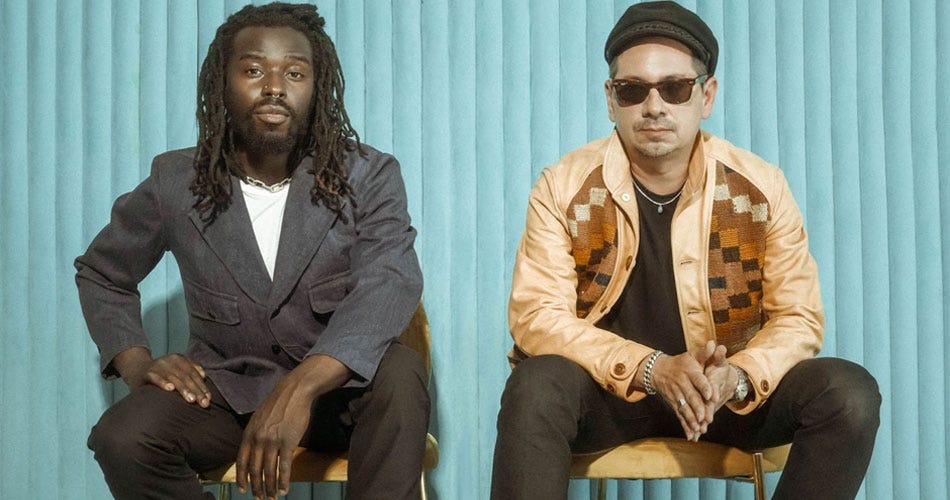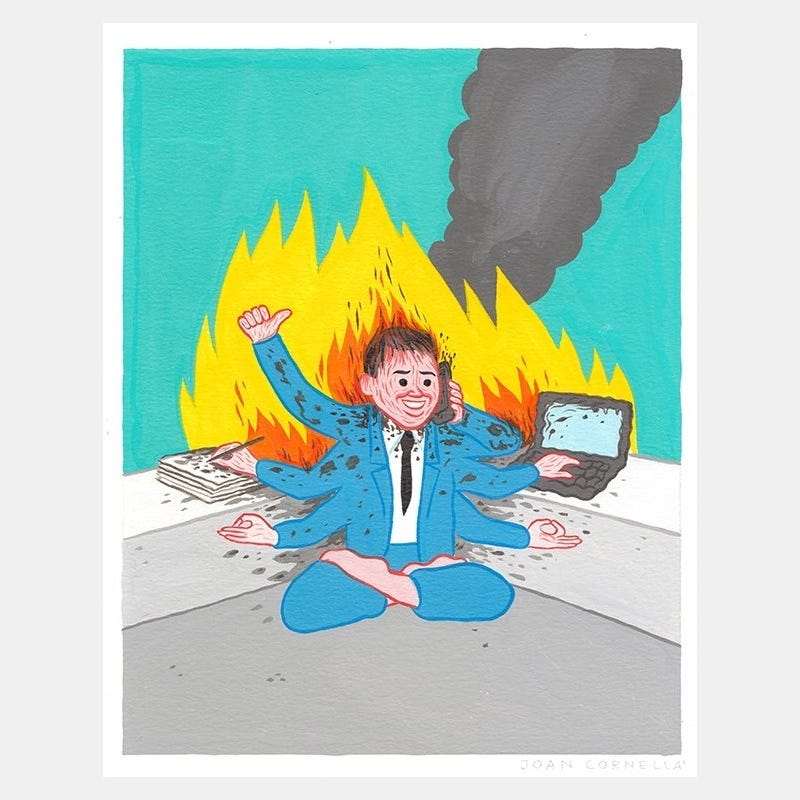At the edge of the sidewalk, beer in hand on a Sunday night, bum shaking back and forth, “pé na areia caipirinha gua de coco cervejinha“, on a mission to catch a guy’s eye two tables away while my friend talked something about Zappa… life is too good.
Even though I’m from the dry team, almost zero alcohol, doing this full cosplay of Brazilian happiness makes me feel very good. Warm and light days, my brother from Floripa was here, he is also a programmer, we spent long hours each in front of our laptops between functions, laughs, commits, confessions…
Various little strolls, 24-hour company, good connection. I like being happy, but it’s unsustainable to be happy all the time. There are things that can only be done with intense solitude, a certain sobriety of emotions, a dash of pessimism and maybe a bit of despair. It’s natural in life to be unhappy from time to time.
Remember when I went on a 10-day meditation retreat? So, as it is totally silent in the place, there are several signs indicating the rules and schedules so we don’t have to ask, and on all of them, there’s a little message at the end: “be happy” – this bothers me a lot.
Yes 🥁 we’ve arrived at the edition where I return to the subject of the first edition, as I promised in the second edition.
Yesterday, I explained why I chose to submit myself to experience this retreat called Vipassana, a meditation method/system that has existed for decades and can be done in almost any country, for free, always following the same standard.
Despite being very fond of this institution, today I am going to make some criticisms in a kind of “end young mystic” vibe. If you leave before the end, I want you to take away one message: despite everything, go to a Vipassana retreat, it’s very good for the mind, really.
I’m going to criticize and those who are over 30 will understand well, we can even really like something, but always notice a detail here and there. Aging is to become very critical or not give a damn, regardless of the position, we learn to deal with the coexistence of paradoxical ideas.
For example, I like the quiet and organized space of Vipassana to retreat, I think it clears the mind and I admire the institution’s capacity for expansion and maintenance.
On the other hand, I find the dissemination of concepts in the retreat somewhat alienating, mainly because Mr. Goenka says that his technique is universal and desires all people to be happy. Of course, compared to other talks that happen at retreats, this is the least problematic, but this neutrality talk bothers me.
Today I’m going to question whether being happy is a universal desire, whether desiring peace among religions is a universal desire, whether wanting to be detached is a universal desire, and whether feeling samkaras for our karmas is universal.
Criticism 1: Be happy
At the end of the retreat, when we could talk to each other, a gray-haired, skinny guy, turtle glasses, professor’s face, told me this (imagine with a Rio accent):
- The last day was the best for me, when he tells us to imagine the vibe of meditation expanding to all beings, wishing Metta for all people, I felt a lot of love…
There, he was caught by the discourse.
We spend 10 days there experiencing a complexity of emotions, and on the last day, they teach us to wish good vibes to the world?! Ok, it’s beautiful, I participate, but I don’t totally accept it.
If you’ve ever tried to meditate, you know: sometimes it’s agonizing, boring, it’s not a vibe – precisely, meditating is important because it teaches you to live with these nuances of reality and it doesn’t always make you happy in the end.
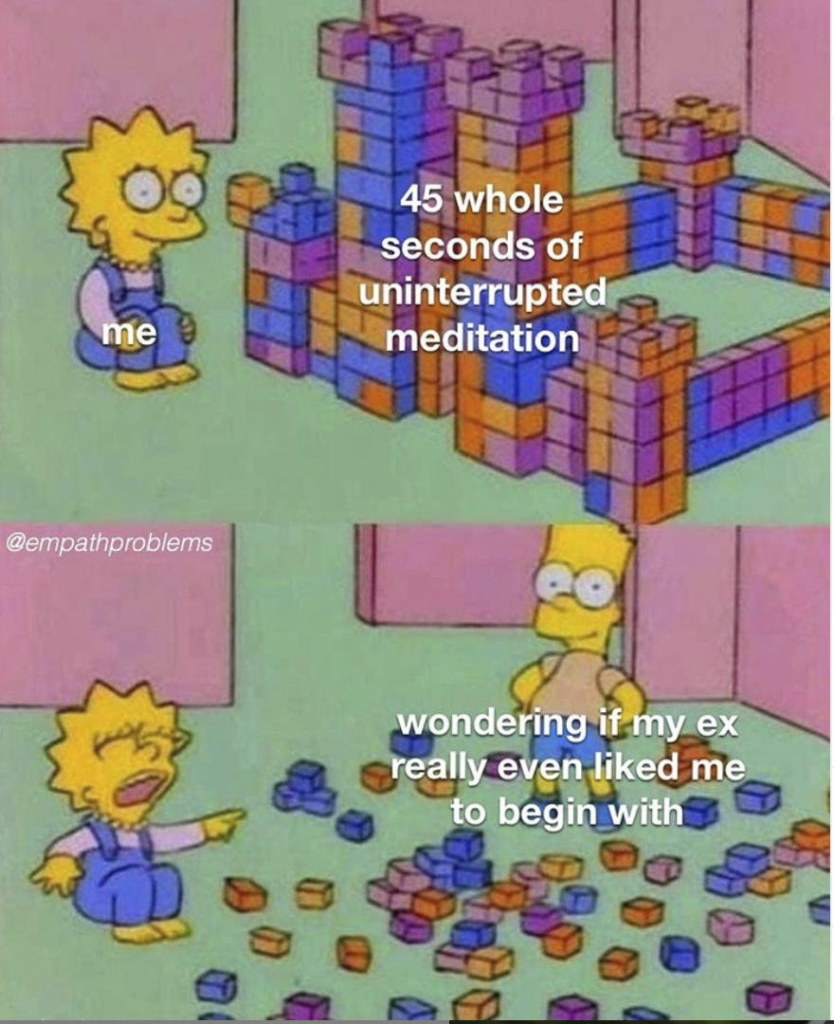
And if it doesn’t feel good, did I meditate wrong? No. Mr. Goenka says there’s nothing wrong. Just observe: if you’re in good vibes at the end of meditation, wish that to the world, if you’re not, don’t vibrate your energy to anyone. In my case, sometimes a narrator in my mind would say:
“While people are being bombed between the Gaza Strip, Rocinha and Ukraine, about 50 people in the middle of the Atlantic forest meditate in love, wishing freedom and happiness to all human beings – super effective.”
Would only a very unbearable person argue that “being happy” is not a universal wish? Maybe. I’ve been softening you up, since the first edition I showed myself a pain I said I don’t believe in full happiness, nor in world peace: they are utopias, fictions, political training speeches.
Why do so many companies want you to want to be happy?
Even the most miserable people have moments of happiness. Why tie a meditation technique to such a generic desire?
Thousands of years ago it was believed that we live this life over and over again in a wheel of samsara, the final desire of meditation was, therefore, not to reincarnate anymore (I won’t jump into that hole now, but if you want, you can take a breath here to reflect on the caste system).
Why is the purpose of meditation not enlightenment, but happiness today? If before the scheme was to get out of the wheel, why do we want to be happy spinning here today?
Critique 2: Peace among religions
On this same last day of the retreat where we learn to expand happiness, we are guided to a room with a television. The first screen we see in days, they play a video of Mr. Goenka talking about universal peace and acceptance of all religions at a UN conference:
“Wow. This retreat is serious, this teacher is recognized worldwide”. Showing this kind of video at the end of the course is a very strong social proof technique.
Perhaps with a bit of critical sense, one might find strange this strong emphasis on the West-East dichotomy, the “East”, India, as a great bearer of the pacifying discourse. For those not very versed in the history of Indian gurus in the “West”, it may all seem unique when, in fact, this talk is quite old:
Over 100 years ago, Vivekananda also spoke of peace in a very similar speech: “We believe not only in universal tolerance, but accept all religions as true.” (You can listen to the original here.)

This speech is not so famous outside the yoga universe, perhaps you thought more of others such as Ghandi or Dalai Lama, it’s along those lines. I will talk more about peace and non-violence in other editions, so if you are enjoying it, give a like, send it to someone and stay:
Anyway, there are several other materials that they could show on the last day, for example the documentary about vipassana applied in prisons, which is great.
But no, the choice went another way, as everything in the retreat is meticulously organized, this end marketing technique is too:
Showing this speech removes any doubt you had about having thrown yourself into a difficult 10-day experience and puts you in a place – you were part of something bigger, come back, call other people, come volunteer at the retreat, let’s expand and achieve world peace.

Well, I don’t agree that these things about being happy and peace among all religions are universal, but they are, perhaps, secondary concepts of the retreat. The central idea is to sit and pay attention to the sensations of the body without feeling attachment or aversion, it is to detach.
Difficult, even more so for so many days and hours: the body hurts, the head starts to freak out in a thousand things – come back, come back here! Pay attention to the right shoulder, what’s there? Nothing? Ok, let’s go to the elbow…
Critique 3: Being detached
It takes self-control not to get up in the middle of the fifth day of meditation and shout “guys, we’re self-flagellating here!! let’s go for a hike!! there’s a waterfall nearby, let’s go!!”.
10 days is a lot. Besides being on a thin line between being elitist or anti-capitalist, doing nothing for so long is also boring as hell.
On the other hand, there is a common imagination that believes in “doing boring things leads to good results“, that “consistency and discipline take you further“. People look at you a bit differently because you can meditate.
It is only a superpower to meditate for so long because we live the exact opposite of this: under an economy based on melting our minds and bodies with pleasure.
Everyone is afraid of losing control, of spending too much and not being able to pay the rent, of eating too much and dying of a heart attack, of sleeping around and dying alone… Therefore, each person has their own fetishization of discipline for some area of life.
Vipassana meditation messes with this imagination, it is a hard exercise, a shock treatment for you to learn not to feel attachment or aversion, it makes you a more resilient person and able to apply this skill in other areas of life.
Beautiful, but it is not “natural” for all cultures to admire a disciplined person, with total control of the body and mind, who does not have excessive desires. Self-control is not natural, not universal, and not a higher moral value.
I don’t want to know about elevation, it’s at sea level, at ground level that my worldly love exists and insists / attachment and freedom (even if partial and temporary), do not need to be a contradiction.
In some indigenous communities, for example, the acceptance and integration of desires is an intrinsic part of the human experience and not something to be purged or dominated.
Why did we invent to eradicate desires? One of the reasons is, for sure, because they distract us from social and financial obligations, which with each passing year of capitalism can only be minimally fulfilled if we maintain a stoic lifestyle, with the consistency of an atomic clock.

Of course, it’s not all capitalism’s fault, other cultures embrace this ideal – I would venture to say that always the most hierarchical ones – for example, another strong reference to discipline that we have is from martial arts or from the time of Japanese shogunate.
But speaking about the now and capitalism itself, it bothers me that the obsession for emotional, rational and financial self-control exists at the same intensity as we put botox in our forehead. It’s against nature this thing of trying to avoid at most the movements of the mind and body.
“And therefore I do not regret my attachments, the times I felt the desire to remain, to be, to be in all the linking verbs with other beings.”
Is it really necessary to strive and suffer to achieve a stability of difficult maintenance? Being detached at all costs does not seem to me a universal concept.
Critique 4: Introduction to catechizing concepts – karma, samkaras…
Finally, I want to talk about the philosophical explanations that Goenka gives to such physical sensations that we feel when we sit for so many hours.
Everyone who goes feels them to some extent and it’s not just about back pain, there are also good sensations, butterflies in the stomach, an open chest… it’s a long time to feel a lot.
Do the sensations come along with the thoughts? Oops, but I thought I wasn’t thinking about anything, just scanning the sensations of the body…
Mr. Goenka has an explanation for all of this. He calls the sensations Samkaras, says they are related to karmas.
He tells several Buddhist stories throughout the course, emphasizes that it doesn’t matter how badly you messed up in the past or in other lives. You can, from now on, meditate and change your conduct, stop accumulating more samkaras, achieve freedom from the ties of the mind and body, spread peace around.
That is, the past has consequences, but there is no direct punishment, as in Christianity. The pains do not come as punishment because you have committed sins, but they do have some relation to your past life.
Anyway, Mr. Goenka says that in this technique it doesn’t matter if the person feels good or bad things, the important thing is your ability to maintain equanimity, to stay firm sitting, still, meditating, without judging the Samkaras, getting rid of them by letting them pass through you without reacting.

Very beautiful and compassionate, but it’s a fic. We have no explanation for the origin of the variation of sensations in the body and we don’t need to believe in Samkaras, nor in Sins, nor in Synapses to want to meditate or think about changing old life patterns. (I’m not anti-current science, I believe in synapses, but in the future we might call it something else, who knows.)
There are things that can only be experienced, you can’t touch them, you can’t put them into words – and you don’t need to. You can see that, the more we sit there meditating using the Vipassana technique, the more we expand our perception of the body and, in a way, we master the mind’s desire to do other things.
This can be said in many ways, but they are not universal concepts, as Mr. Goenka puts it. Proust, a guy who we know was not very happy, said “We only heal from a suffering after we have endured it to the end.”
I hope you go to Vipassana
Despite Mr. Goenka’s end-of-day recordings telling his Buddhist stories and trying to catechize us to rid ourselves of supposed samkaras, all the other hours of the day are in silence, you with yourself, without having to worry about basic survival things like cooking or paying for accommodation.
Where else can you find this?
Sitting for 10 days in Vipassana will not solve “all the problems of humanity”, nor yours, but it is very beautiful to think and act as if it would.
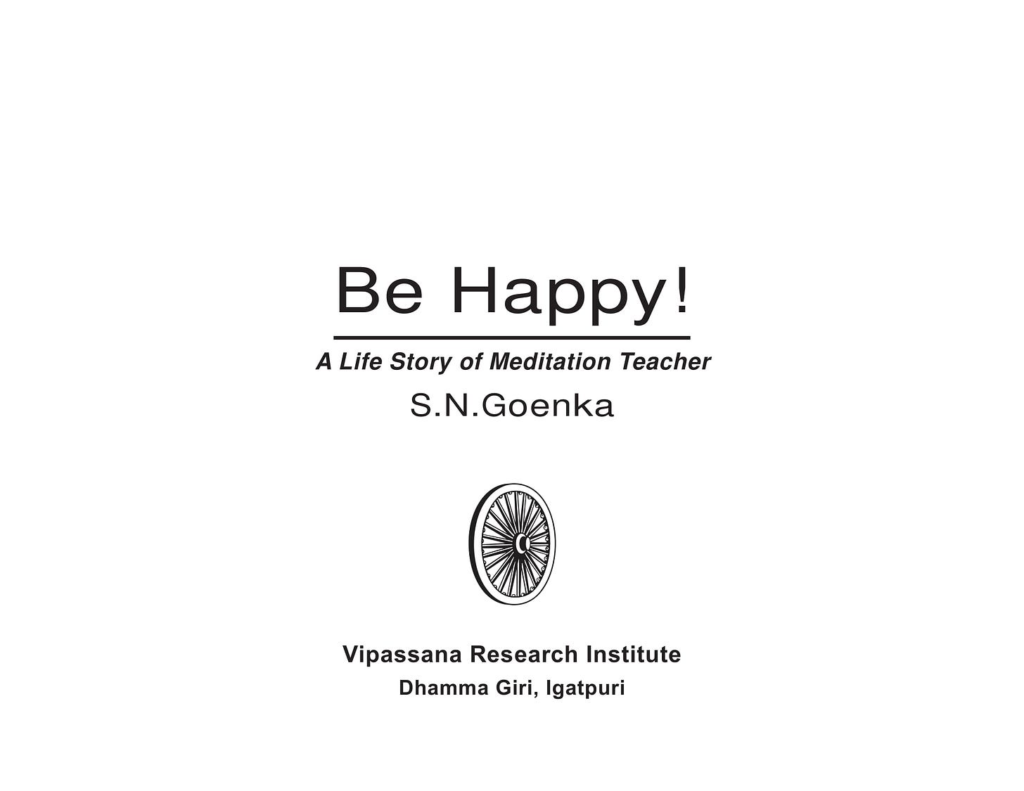
Leaving the retreat, I asked the people who were returning our phones if they worked there permanently or were volunteers. Both told me they had been volunteers for years, but unfortunately had other obligations and couldn’t stay there permanently.
Of course, they wanted to stay there all the time, in the masturbation of cleansing their sins, exercising self-discipline, and radiating happiness to the world. What a noble life mission, guys. Catechism successfully completed.
Ironies aside, there is no place where we are not subjected to some ideology, whether in the shopping center, in the company, or in the meditation center… as David Foster Wallace said, some are so present that they seem like air around us, just as water is obvious to a fish in a tank.
It is up to each one to develop a deeper consciousness of how to better interpret the social constructs in which we are trapped inserted. With Vipassana it’s no different, you go on a retreat and Mr. Goenka says all the time that it is a universal technique, like a journalist saying that their opinion is impartial.
The retreat exists within a larger political and cultural context, it is up to each participant to look deeper into where this applies to their life. Vipassana is not apolitical or secular, for example, in England there is a retreat that is only for executives.

It’s natural that this happens, it’s a lot of time and money to maintain this global structure. It’s not an a-cultural environment nor a universal technique. Quite the contrary, it’s a retreat towards a very specific belief: with practice we can be happy. Happy for what?
“Perhaps clinging to detachment is one of the less healthy attachments”
The highlighted excerpts are all from this beautiful text “Detachment is not the only path to freedom” by Geni, a Guarani psychologist. Go check it out.



